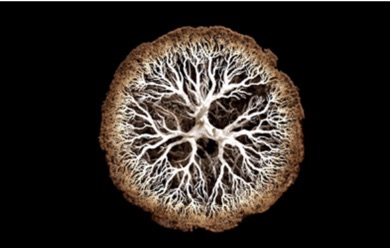

Living nature matter


trees of life

The project is dedicated to the protection of the rights of living nature (non-human) matter.
Post-fires wildlife
On the basis of the experience of massive and devastating forest fires in the Northern hemisphere in 2019-2020 (Australia, Russian Siberia, US California, etc.), where dozens of millions of hectares of forest burned on all continents:
A colossal number of animals and birds die in forest fires.
Sedentary species of animals in the forest are doomed.
Small mammals are too slow and cannot escape.
Large animals have a chance to escape, but migrate far and loose their feeding base.
Birds with land nesting normally die too.
Almost all birds die, mainly of inhaling smoke, birds are very sensitive to smoke, tolerate it much worse than people because of the characteristics of respiration.
In insects ecological memory is close to null in case of forest fires.
For the 3 millions hectares burned in Aysén, approximately 400 millions (conservative) animals were killed in the region, this figure includes invertebrates only. Many species, some unknown, were extinct.
Introduction of cattle on burned down land pushed some of the remaining native animals to extinction.
A novel ecosystem was created in the region with a new normal climate, as harbinger of planet’s future.
In the valley, all endemic small animals and birds in the nests, probably, perished in 1939.
Large mammals had a chance to escape, but had to migrate towards swampy spaces and floodplains of rivers, as the whole region was subject to colonising burning.
Clearing fires occurred in the valley in spring, when animals and birds had offsprings. By instinct they would not abandon their offsprings, and those were too young to escape and are not able to run fast. So casualties were even more important in all groups of animals and birds.
All insects died and still have not reappeared.
We will never know the number of animals that perished in the deliberate fires of the 1930s, and what species. We see now post-fire wildlife, most migrated from other places.
Human pressure is more deadly for wild animals than climate change. Habitat loss is the predominant factor leading to biodiversity loss in the Anthropocene. Due to ecosystems decay ecological processes change in smaller and more-isolated habitats such that more species are lost than would have been expected simply through loss of habitat alone.
Understanding the relationship between a decline in habitat area and
the effect on species is crucial for designing conservation strategies.
Redi-Vernadsky principle:
Life comes only from life, there is a clear impassable line between
the living and the non-living,
while all living and non-living things constantly interact.
El proyecto está dedicado a la protección de los derechos de la materia natural (no humana) viva
La vida silvestre después de los incendios
Reglamento General de Observación de Mamíferos Reptiles y aves
Hidrobiológicas y del Registro de Avistamiento de Cetáceos.
Segun la experiencia de incendios forestales masivos y devastadores en el hemisferio norte en 2019-2020 (Australia, Siberia rusa, EE. UU. California, etc.), donde decenas de millones de hectáreas de bosque fueron quemados en todos los continentes:
Un número colosal de animales y aves mueren en incendios forestales.
Las especies sedentarias de animales del bosque son condenados.
Los mamíferos pequeños son demasiado lentos y no pueden escapar.
Los animales grandes tienen la oportunidad de escapar, pero migran lejos y pierden su base de alimentación.
Las aves con anidación en el suelo normalmente mueren también.
Casi todas las aves mueren, principalmente por la inhalación de humo. Las aves son muy sensibles al humo, lo toleran mucho peor que los humanos debido a las características de la respiración.
En los insectos, la memoria ecológica es casi nula en caso de incendios forestales.
Para los 3 millones de hectáreas quemadas en Aysén, aproximadamente 400 millones (al menos) de animales fueron sacrificados en la región, esta cifra incluye únicamente a los invertebrados. Algunas especies, la mayoria desconocidas, fueron extintas.
La introducción de ganado en terrenos quemados llevó a la extinción a algunos de los animales restantes.
Se creó un ecosistema novedoso en la región con un nuevo clima de normalidad, como presagio del futuro del planeta.
En el valle, todos los animales pequeños y aves en los nidos endémicos, probablemente, perecieron en 1939.
Los grandes mamíferos tuvieron la oportunidad de escapar, pero tuvieron que migrar hacia espacios pantanosos y llanuras aluviales de ríos, ya que toda la región estaba sujeta a la quema de colonización.
El incendio de 1939 en el valle sucedió en la primavera, cuando los animales y las aves tuvieron descendencia. Por instinto, no abandonarían a sus descendientes, y esos eran demasiado jóvenes para escapar. Por lo tanto, las perdidas fueron aún más importantes en todos los grupos de animales y aves.
Todos los insectos murieron y aún no han reaparecido.
Nunca sabremos la cantidad de animales que perecieron en los incendios deliberados de la década de 1930, y qué especies. Ahora vemos la vida silvestre posterior al incendio, la mayoría migrada desde otros lugares.
La presión humana es más mortal para los animales salvajes que el cambio climático. La pérdida de hábitat es el factor predominante que conduce a la pérdida de biodiversidad en el Antropoceno. Debido a la decadencia de los ecosistemas, los procesos ecológicos cambian en hábitats más pequeños y aislados, de modo que se pierden más especies de las que se esperaría simplemente por la pérdida de hábitat.
SAG: Ley de casa y reglamentos
The 6 kingdoms of life:
1. Bacteria 2. Archaea 3. Protista
4. Animalia



